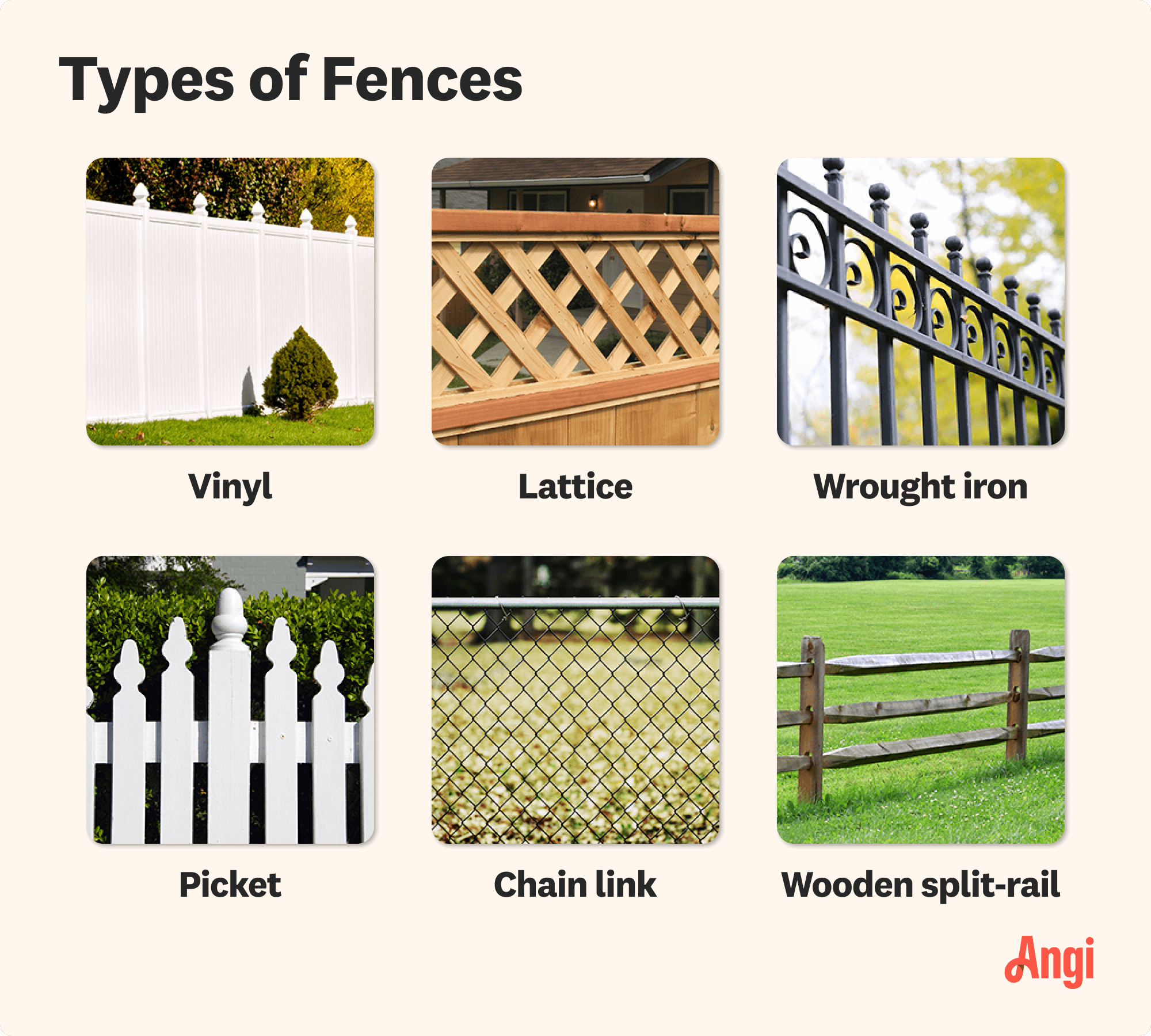
How much a privacy fence costs depends on several factors, including the size of the fence and the material used. Our cost guide breaks down these and other factors.
Fencing service costs depend on your project and location. Check with a local pro for your specific job.
Pros charge $40 to $90 per hour for fence removal.
Heavier fence materials, like concrete and wrought iron, will cost more to remove.
Protective equipment and tools for a DIY job are expensive, so hiring a pro is a better use of your time and money.
Fence removal costs about $500 depending on the size and type of fence, though it can range between $300 and $750. Frequently, fence removal is charged by the linear foot, with those prices ranging from $3 to $7 per linear foot. Simple post fences are easiest to remove, so it makes sense that the price increases when fences have cement footing or require dismantling. If you plan on recycling the fencing material, that will also increase the cost because it will take longer if you plan on preserving the material.

You can think of fence removal costs in three categories: type of material, size, and how much labor is required. A change in one of these categories tends to affect the other. For example, a wooden fence takes longer to remove and has higher disposal fees due to weight. Any trees or vegetation around the fence will also increase the time required to remove them and may even require special equipment.
The type of fence you’re removing plays a large part in the total cost. A chain link fence will be the most affordable to remove, while anything heavy, like wrought iron or concrete fences, requires significantly more work. While removal is much less expensive than the cost of fence repair, it still isn’t the least costly work to contract or DIY.
Which material you need to remove also matters because of degradation. A vinyl or wrought iron fence will likely be in one solid piece and you can treat it as hard as you want. However, if you’re removing an old wooden fence that has rotted, it’ll take much longer to remove if the material is breaking down during removal.
| Fence Type | Average Removal Cost per Linear Foot |
|---|---|
| Chain link | $3–$4 |
| Vinyl | $3–$4 |
| Wooden picket | $3–$4 |
| Wooden split rail | $3–$5 |
| Concrete | $4–$7 |
| Wrought iron | $4–$6 |
The size of your fence is the most significant determining factor in your total costs. Larger fences may have more complicated aspects, like corners or concrete posts every hundred feet. Hiring a fence contractor is a good idea if you don’t know how your fence is secured.
Another consideration with size is disposal expenses if you don’t plan on reusing the material. While there can be an economy of scale when renting dumpsters, most residential fence disposal will take place at a city dump, where the weight of the material determines the cost. Multiple trips also cost more in gas, time, and rental charges (if you don’t own a truck or utility van).
| Fence Size in Linear Feet | Chain Link Removal Cost | Wooden Split Removal Cost |
|---|---|---|
| 100 | $300–$400 | $300–$500 |
| 175 | $525–$700 | $525–$875 |
| 325 | $975–$1,300 | $975–$1,625 |
| 500 | $1,500–$2,000 | $500–$2,500 |
It’s not often you can remove a fence with just your bare hands. A pro will know which tools to use for each fence type, but you’ll need some materials no matter what the job entails. The bare minimum required gear is protective eyewear, thick gloves to prevent blisters and splinters, and thick shoes. Nothing hurts like a wooden post falling on your toes, so wear steel-toe boots if you have them.
| Tool | Average Cost |
|---|---|
| Thick gloves | $25 |
| Protective goggles | $15 |
| Hammer | $18 |
| Hand saw or reciprocating saw | $75 |
| Shovel | $40 |
| Heavy-duty wire cutters | $35 |
| Fence post puller | $80 (rental price per day) |
Only a professional will be able to break down your individual project into labor costs, but expect to pay between $40 and $90 per hour for fence removal. There are certain factors that will determine if you need specialized workers or specific tools (like bulldozers or excavators). Some factors that determine total labor costs are:
Fence condition
Material
Accessibility
Complexity
Distance to a disposal site
Regional labor costs
Required equipment rental
Working with a local fence company is the best way to get an accurate quote.
Cleaning up after fence removal is an important step that can considerably affect the project cost. There tends to be a lot of leftover material that needs disposal after a fence removal.
Where possible, recycle. This is easier with metal than wood, which usually needs to be taken to a municipal dump. If you have land and your neighbors are far away, you might be tempted to burn the old fence, but that isn’t a good idea. Fencing wood is often treated with chemicals that aren't safe to burn. Another reason not to burn it? You could be looking at heavy fines for doing so.
If you need to rent a truck or van for removal, it should be factored into the cleanup cost.
It’s a good idea to call some friends—many hands make light work—when you’re ready to take the material to the recycling facility or dump.
You may be surprised to learn that even tearing down an old fence often requires a building permit. Every city deals with this issue differently—some cities won't require permits for fences under 6 feet tall, for example. You can bring your proposal to the relevant department of your local government office or, if you hire a fencing pro, they will do this for you as part of the project.

It's not easy to say whether or not fence removal is a good DIY project; there are just too many variables. A chain link fence, while inexpensive to remove, won't be easy for someone unfamiliar with wire cutters or removing metal posts. That same person, however, might find it extremely easy to break through a split wooden fence.
Another factor when determining whether or not you should DIY—other than to save on labor costs—is whether you plan on replacing the fence. If all you’re doing is ripping posts out of the ground and filling in the post holes with dirt, you don’t need to be precise. If you’re reusing the materials (or need to insert concrete posts), the job becomes significantly more involved, and more care is needed.
Removing a fence is heavy work, and not everyone has the strength to undertake this type of project. Even a simple fence can take more than 40 hours to remove, which equates to an entire workweek of manual labor. It's a good idea to talk to a pro before deciding to undergo the project yourself because they will have insight gained from years of experience.
There are a few ways to reduce the cost of fence removal. Some tips to keep costs low are:
Hire professionals during a slow season.
Use the closest waste facility.
Borrow a friend or family's truck for disposal.
Try to recruit friends and family for removal help.
See if a pro will let you work with their team to lower labor costs.
Home is the most important place on earth, which is why Angi has helped more than 150 million homeowners transform their houses into homes they adore. To help homeowners with their next project, Angi provides readers with the most accurate cost data and upholds strict editorial standards. We extensively research project costs to develop the pricing data you see, so you can make the best decisions for you and your home. We rely on reputable sources, including the U.S. Bureau of Labor Statistics, academic journals, market studies, and interviews with industry experts—all to ensure our prices reflect real-world projects.
Want to help us improve our cost data? Send us a recent project quote to [email protected]. Quotes and personal information will not be shared publicly.
From average costs to expert advice, get all the answers you need to get your job done.

How much a privacy fence costs depends on several factors, including the size of the fence and the material used. Our cost guide breaks down these and other factors.

Installing a glass fence costs much more than wood or metal, but those who invest do so for aesthetics. Learn how different types can significantly influence your project budget.

Silt fence installation costs vary depending on the size of the lot, the fencing type, and the installation technique. Use this guide to get the budget right.

Choosing a vinyl, PVC, or plastic fence offers benefits over wooden fencing, like improved durability. Learn about the many types of vinyl fencing available.

A fence is a great way to add privacy and style to your yard. Compare two common options, horizontal vs. vertical fences, to see which is right for you.

Wire fencing offers reliable property boundaries, livestock containment, and garden protection. Use this guide to learn how much wire fencing costs based on factors like type and material.